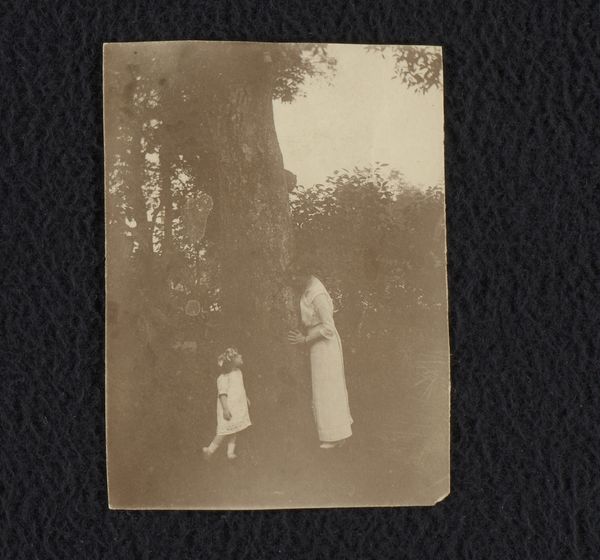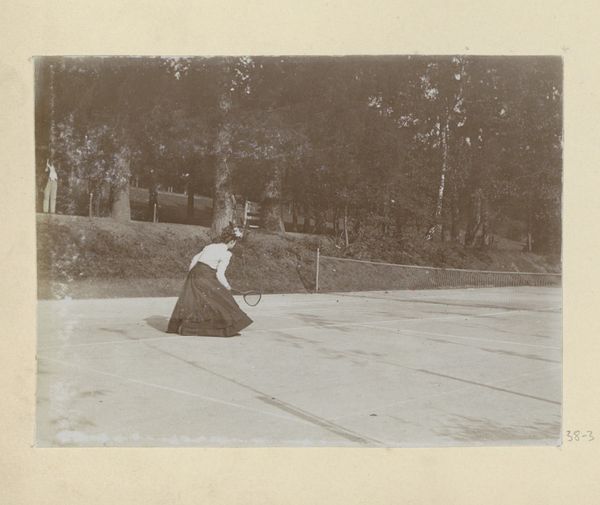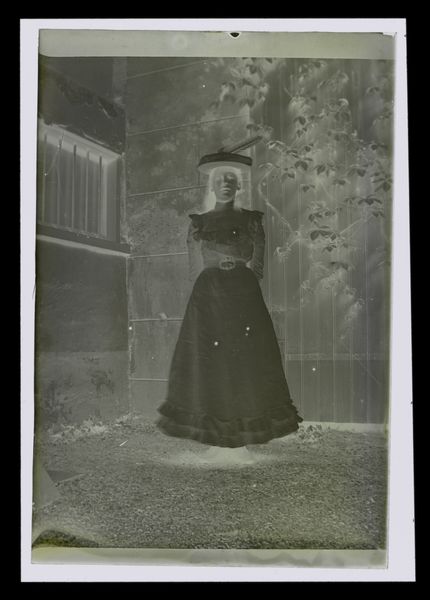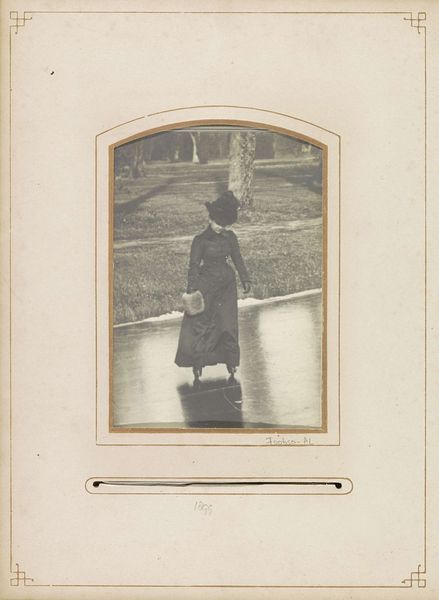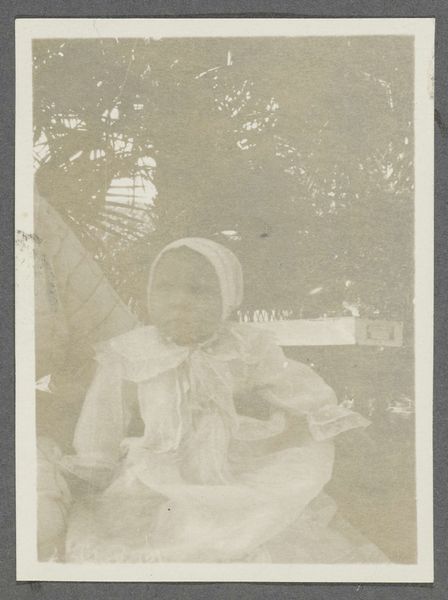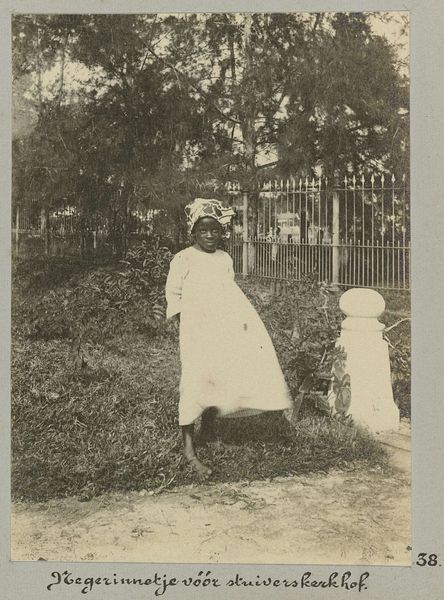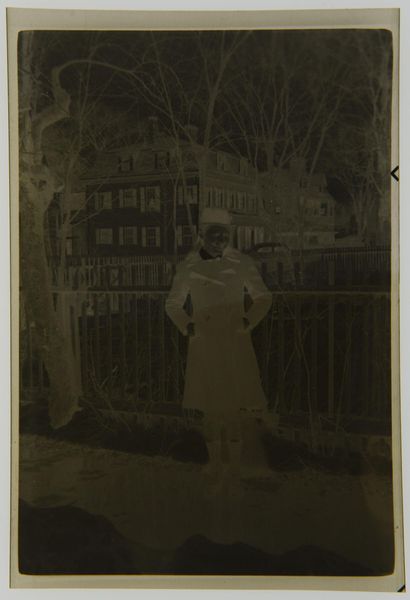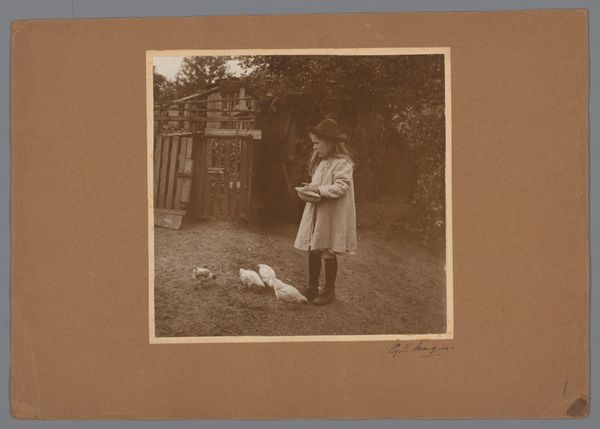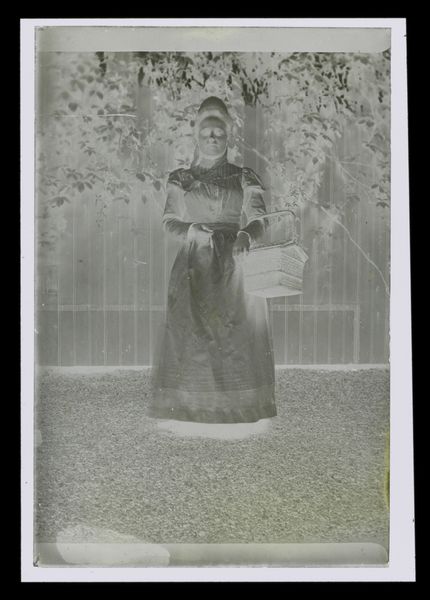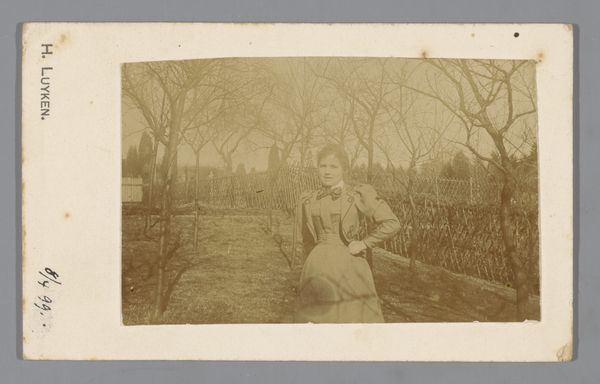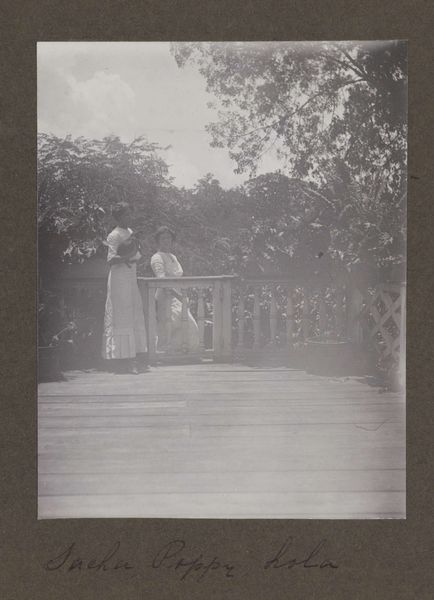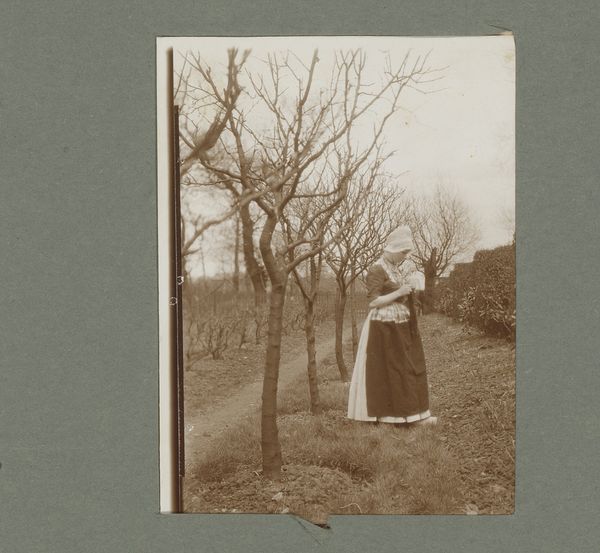
print, photography
#
portrait
#
print photography
#
garden
#
still-life-photography
# print
#
photography
Dimensions: height 115 mm, width 80 mm
Copyright: Rijks Museum: Open Domain
Curator: Let's explore "Vrouw in een tuin, en profil," a photograph estimated to be made between 1920 and 1940. It depicts a woman standing in what seems to be a domestic garden space. What's your immediate reaction? Editor: There’s a quietness to it, a formality despite the intimate garden setting. It's also striking how the woman is positioned, almost pressed against the geometric lines of the picket fence, giving me a slight sense of restriction. Curator: I see what you mean. From a material perspective, the print medium itself— likely a silver gelatin print—affects this perception of restriction. Think about the constraints of the process, how the grayscale palette flattens textures and forms. It transforms a possibly lush garden into a space of contrasted light and shadow, playing with the concept of interior vs exterior, private life in connection to the social context. Editor: Absolutely, and considering this era, post-World War I, there's a significant shift in gender roles. This photograph captures a woman within the domestic sphere, which historically confines women, while at the same time suggesting perhaps some measure of independence and individual space within it. Curator: It is an interesting perspective, I am drawn to how this print can give a deeper insight into what the photographic process can do beyond accurate depiction, reflecting, for example, the evolving dynamics in labor division and the mass-produced imagery made possible by technical and material innovations, bringing portraiture to a broader public. Editor: Indeed. And it reminds me to consider the subjects themselves—what stories and identities are present and absent? Perhaps there’s a conversation here, questioning the ways women’s lives have been depicted, controlled, or celebrated through media. Curator: Thank you for pointing out those social constructs in conjunction to materiality, that allows us to see not only how the physical limitations shaped image-making but also how the photograph itself becomes a form of material culture, embodying these changes. Editor: Precisely! This photograph shows how important it is for us to keep pushing ourselves to expand on how material and artistic practices are intertwined.
Comments
No comments
Be the first to comment and join the conversation on the ultimate creative platform.
